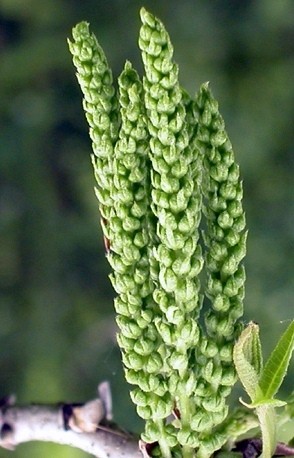Mockernut Hickory
(Carya alba)

Description
Carya tomentosa, (mockernut hickory, mockernut, white hickory, whiteheart hickory, hognut, bullnut) is a tree in the Juglandaceae or walnut family. The most abundant of the hickories, common in the eastern half of the US, it is long lived, sometimes reaching the age of 500 years. A straight-growing hickory, a high percentage of its wood is used for products where strength, hardness, and flexibility are needed. The wood makes excellent fuel wood, as well. The leaves turn yellow in Autumn. Mockernut hickory, a true hickory, grows from Massachusetts and New York west to southern Ontario, and northern Illinois; then to southeastern Iowa, Missouri, and eastern Kansas, south to eastern Texas and east to northern Florida. This species is not present in Michigan, New Hampshire and Vermont as previously mapped by Little. Mockernut hickory is most abundant southward through Virginia, North Carolina, and Florida, where it is the most common of the hickories. The female flowers appear in short spikes on peduncles terminating in shoots of the current year. Flowers bloom in the spring from April to May, depending on latitude and weather. Usually the male flowers emerge before the female flowers. Hickories produce very large amounts of pollen that is dispersed by the wind. Mockernuts are preferred mast for wildlife, particularly squirrels, which eat green nuts. Black bears, foxes, rabbits, beavers, and white-footed mice feed on the nuts, and sometimes the bark. The white-tailed deer browse on foliage and twigs and also feed on nuts. Hickory nuts are a minor source of food for ducks, quail, and turkey. Mockernut hickory nuts are consumed by many species of birds and other animals, including wood duck, red-bellied woodpecker, red fox, squirrels, beaver, eastern cottontail, eastern chipmunk, turkey, white-tailed deer, white-footed mice, and others. Many insect pests eat hickory leaves and bark. Mockernut hickories also provide cavities for animals to live in, such as woodpeckers, black rat snakes, raccoons, Carolina chickadees, and more. True hickories provide a large portion of the high-grade hickory used by industry. Mockernut is used for lumber, pulpwood, charcoal, and other fuelwood products. Hickory species are preferred species for fuelwood consumption. Mockernut has the second-highest heating value among the species of hickories. It can be used for veneer, but the low supply of logs of veneer quality is a limiting factor.
Taxonomic tree:







